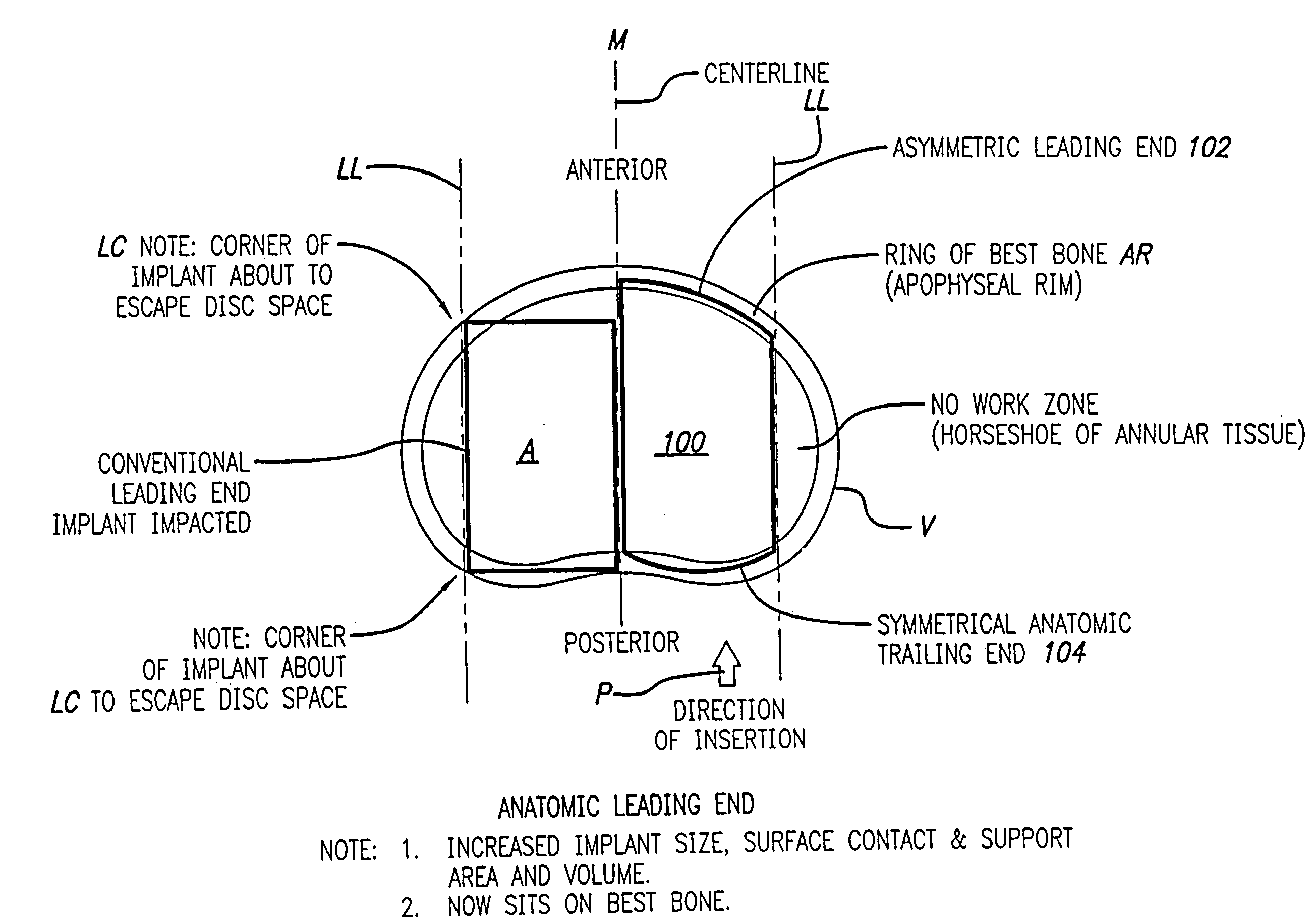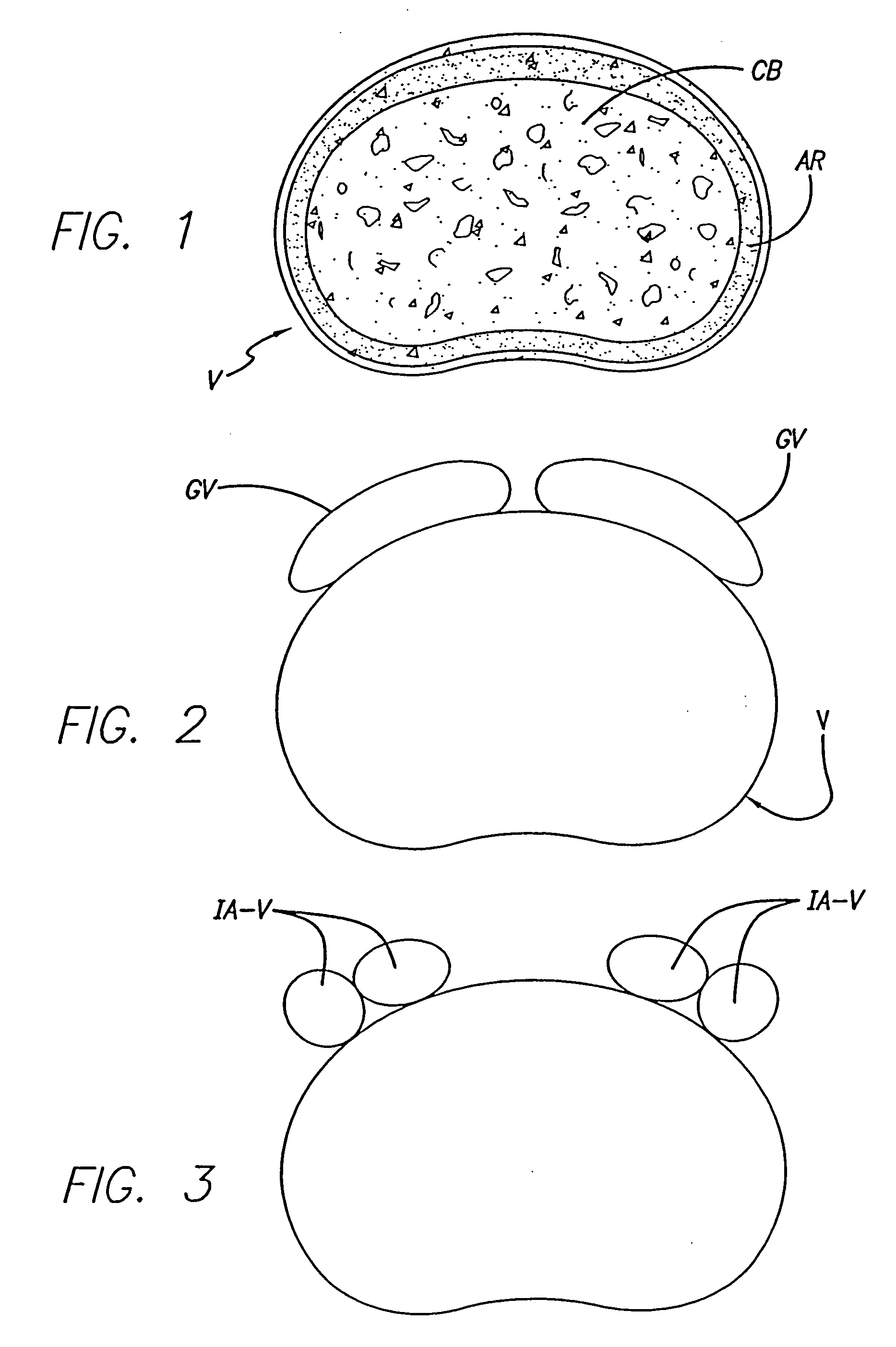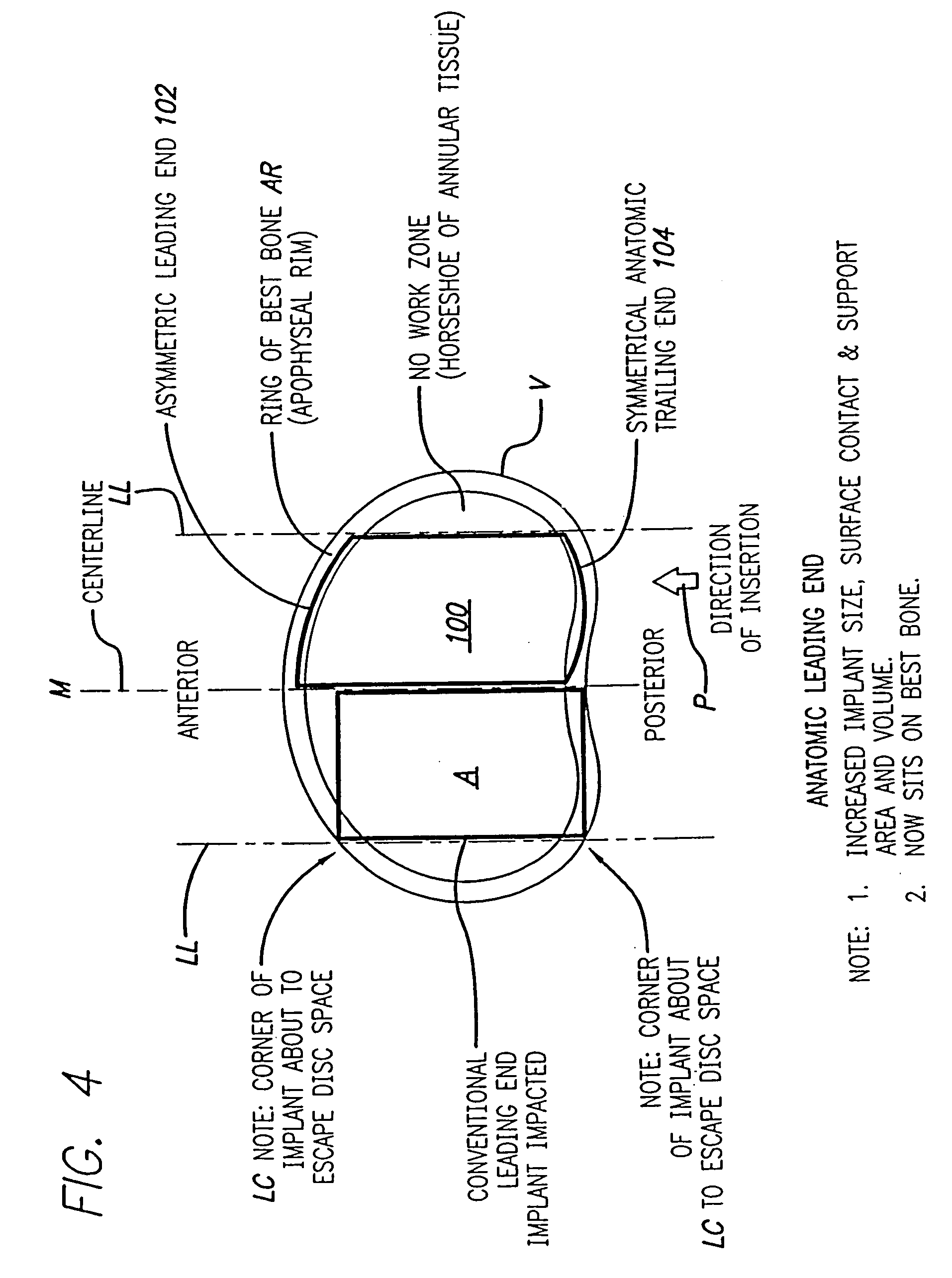Bone hemi-lumbar arcuate interbody spinal fusion implant having an asymmetrical leading end
a hemi-lumbar arcuate and interbody technology, applied in the field of interbody spinal implants, can solve the problems of affecting the fusion process, the loss of the best structural bone of the vertebral endplate, and the inability to thread in implants, so as to achieve the effect of better filling of the anterior
- Summary
- Abstract
- Description
- Claims
- Application Information
AI Technical Summary
Benefits of technology
Problems solved by technology
Method used
Image
Examples
Embodiment Construction
[0041]FIG. 4 shows an embodiment of the present invention comprising an interbody spinal implant generally referred by the numeral 100, inserted in the direction of arrow P from the posterior aspect of a vertebral body V on one side of the centerline M in the lumbar spine. In a preferred embodiment of the present invention, the implant can be made of bone that is either in a naturally occurring state, or can be made of a composite material comprising bone particles. In a naturally occurring state, the implant can be manufactured from a piece of bone obtained from a major long bone or other suitable source and can include bone dowels and diaphyseal bone rings, for example. Alternatively, the implants can be manufactured from a composite of bone made up of cortical fibers, bone filaments, bone particles, as examples. In addition to bone, the composite may also include a material which may or may not be bioactive and / or bioresorbable such as a plastic, ceramic, or other. Once formed, t...
PUM
| Property | Measurement | Unit |
|---|---|---|
| radius | aaaaa | aaaaa |
| arc of radius | aaaaa | aaaaa |
| height | aaaaa | aaaaa |
Abstract
Description
Claims
Application Information
 Login to View More
Login to View More - R&D
- Intellectual Property
- Life Sciences
- Materials
- Tech Scout
- Unparalleled Data Quality
- Higher Quality Content
- 60% Fewer Hallucinations
Browse by: Latest US Patents, China's latest patents, Technical Efficacy Thesaurus, Application Domain, Technology Topic, Popular Technical Reports.
© 2025 PatSnap. All rights reserved.Legal|Privacy policy|Modern Slavery Act Transparency Statement|Sitemap|About US| Contact US: help@patsnap.com



